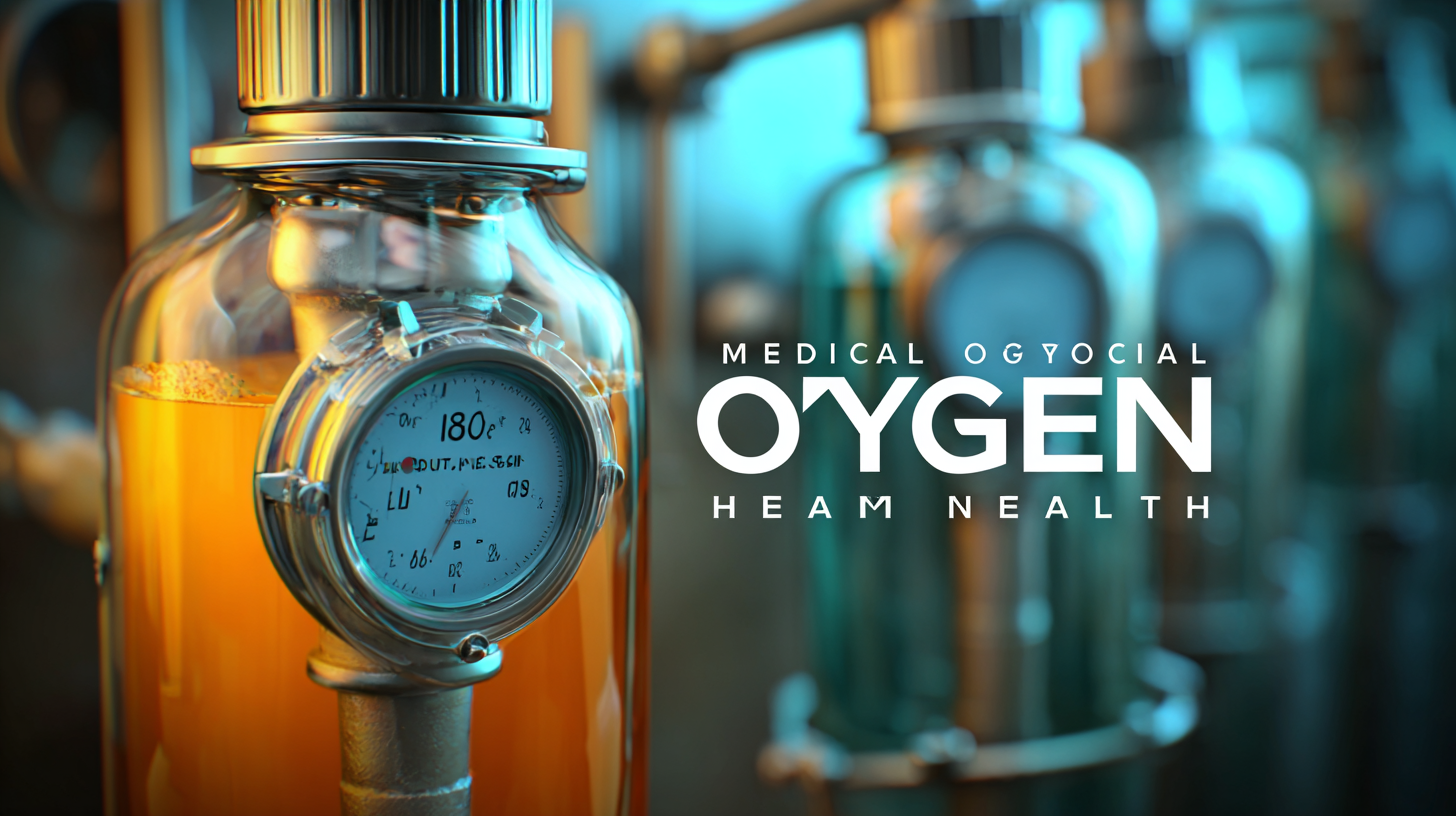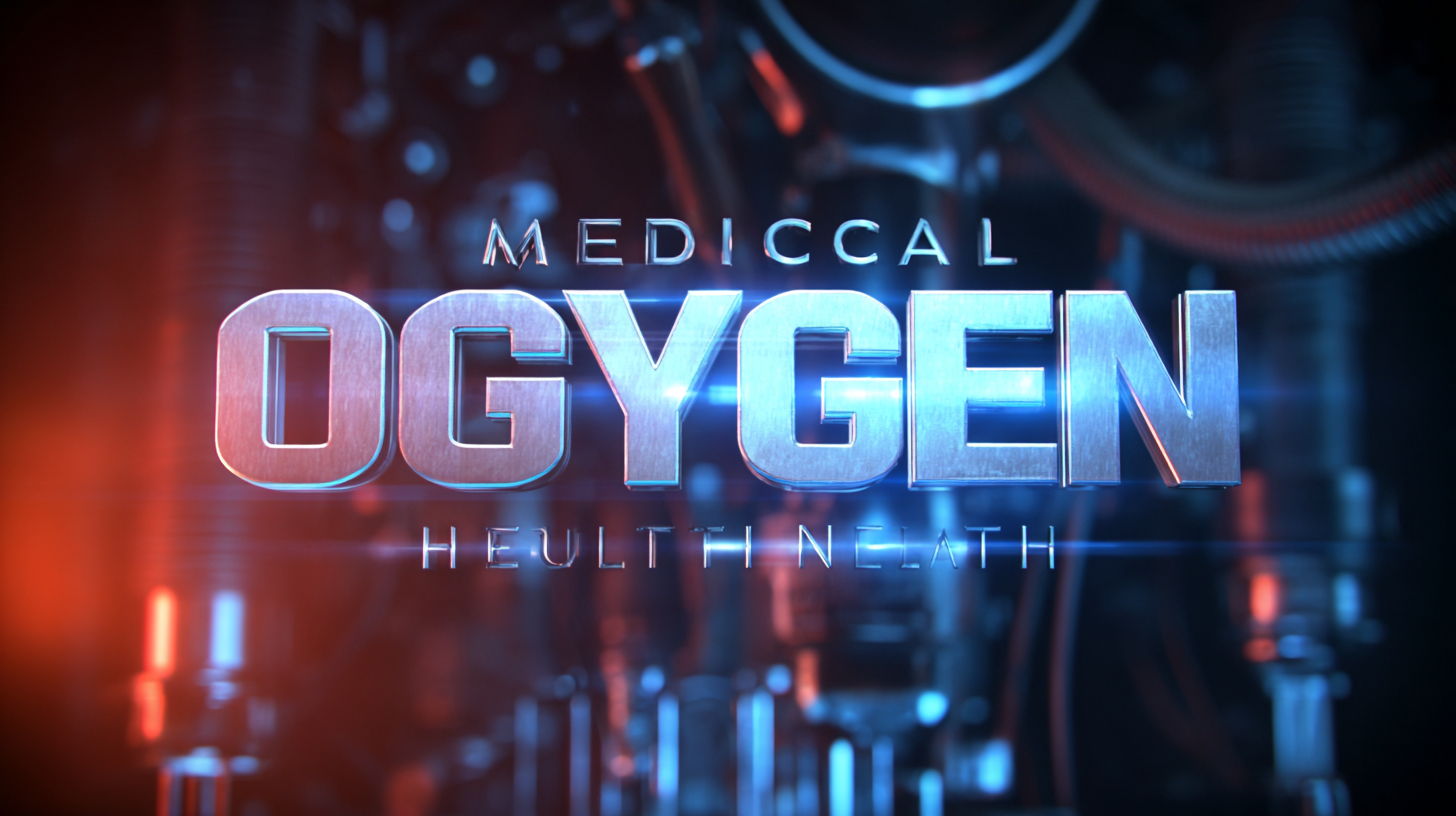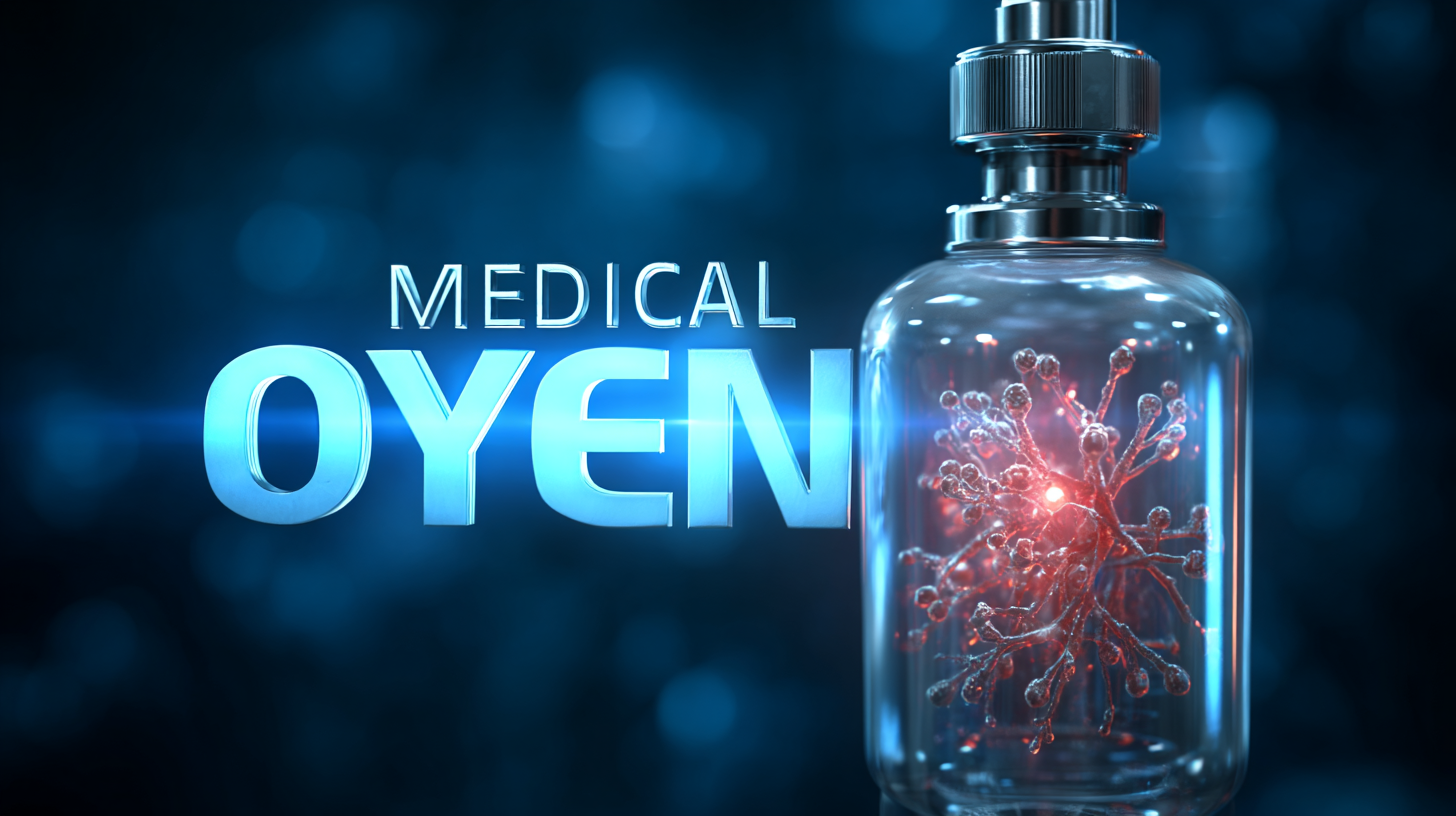
How to Choose the Best Medical Oxygen for Your Healthcare Needs
Choosing the right medical oxygen is a critical decision that can significantly impact the quality of care for patients with respiratory conditions or those in need of supplemental oxygen therapy. In today's healthcare landscape, where trust in product quality is paramount, understanding the nuances of medical oxygen options is essential. With a reputation built on reliability and excellence, Chinese-manufactured medical oxygen has gained global trust, offering consistent quality that healthcare providers and patients can depend on.

This blog will guide you through the key considerations when selecting the best medical oxygen to meet your specific healthcare needs, ensuring you make informed choices that prioritize both safety and efficacy. As we explore this essential topic, we will highlight the importance of quality assurance and the unique advantages offered by reputable manufacturers in the medical oxygen supply chain.
Understanding the Different Types of Medical Oxygen Available Today
When selecting the best medical oxygen for various healthcare needs, understanding the different types available is crucial. Medical oxygen primarily comes in two forms: gaseous oxygen and liquid oxygen. Gaseous oxygen is stored in high-pressure cylinders and is commonly used in home care and ambulatory settings due to its portability. According to a report by Grand View Research, the global medical oxygen market is expected to reach USD 3.76 billion by 2025, driven by increasing prevalence of respiratory diseases and the growing demand in home healthcare settings.
Liquid oxygen, on the other hand, is used in larger quantities and is typically utilized in hospital settings where a continuous supply is needed. The efficiency of liquid oxygen is noteworthy; it allows for a more concentrated delivery system, making it ideal for patients requiring higher flow rates. The American Association for Respiratory Care points out that liquid oxygen systems can deliver twice as much oxygen as gas cylinders in the same amount of space, illustrating their practicality for institutional use. Understanding these differences not only aids healthcare providers in making informed choices but also ensures optimal care for patients needing respiratory support.
How to Choose the Best Medical Oxygen for Your Healthcare Needs
| Type of Medical Oxygen | Description | Uses | Delivery Method |
|---|---|---|---|
| Compressed Oxygen | Oxygen stored in high-pressure cylinders. | Used for patients requiring supplemental oxygen. | Cylinders with regulators, masks, or nasal cannulas. |
| Liquid Oxygen | Oxygen in liquid form, requires special storage. | Long-term oxygen therapy, particularly for home use. | Portable containers with vaporizer systems. |
| Oxygen Concentrators | Devices that extract oxygen from ambient air. | Home use for patients with chronic respiratory conditions. | Electric units that deliver oxygen via nasal cannulas. |
| Oxygen Blending Systems | Systems that mix oxygen with air for desired concentration. | Used in critical care settings for precise oxygen delivery. | Tubes connected to ventilators or masks. |
| Oxygen Cylinders | Portable tanks of oxygen for emergency situations. | Emergency use, transportation, or backup supply. | Hand-held tanks with single-use masks or cannulas. |
Key Factors to Consider When Selecting Medical Oxygen for Patients
When selecting medical oxygen for patients, several key factors should be considered to ensure that healthcare needs are met effectively.
First and foremost, it is essential to understand the patient's specific condition and oxygen requirements. Whether it's for
chronic respiratory diseases or temporary support, the concentration and flow rate of oxygen can vary significantly.
Additionally, the delivery method through devices like portable oxygen concentrators or liquid oxygen systems should align with the patient's lifestyle, ensuring ease of use and mobility.
Another vital aspect is the regulatory standards and
certifications of the oxygen equipment. Proper regulatory oversight ensures safety and efficacy, providing peace of mind for both patients and healthcare providers.
As the portable oxygen kit market is projected to grow significantly in the coming years, it is essential to choose products that are backed by reliable clinical evidence and user feedback. Ultimately, informed choices in selecting medical oxygen can greatly enhance patient outcomes, promoting better health and quality of life.
Evaluating the Quality and Purity of Medical Oxygen Products
When evaluating the quality and purity of medical oxygen products, it is essential to consider several key factors to ensure they meet healthcare needs. The purity of medical oxygen directly affects its efficacy and safety, making it crucial for healthcare providers to source oxygen from reputable manufacturers that adhere to strict regulatory standards. Recent developments, such as the introduction of Kenya's first medical oxygen policy roadmap, emphasize the importance of equitable access to high-quality medical oxygen, indicating a global shift towards enhancing the infrastructure supporting oxygen delivery.

In addition, advancements in technology, particularly the refinement of oxygen concentrators using pressure swing adsorption (PSA) methods, show promise in meeting variable product demands. These innovations highlight the necessity of evaluating not only the product's flow rate but also the overall system's performance and reliability. Furthermore, the FDA's recent regulatory niche for medical gases underscores the ongoing need for rigorous quality control in medical oxygen production. By prioritizing these aspects, healthcare providers can make informed choices, ultimately improving patient outcomes in various medical settings.
The Role of Technology in Advancing Medical Oxygen Delivery Systems
The Role of Technology in Advancing Medical Oxygen Delivery Systems
In recent years, technological advancements have significantly transformed the landscape of medical oxygen delivery systems. With the integration of smart technology and IoT (Internet of Things), healthcare providers now have access to more efficient and reliable means of delivering oxygen to patients. For instance, portable oxygen concentrators equipped with real-time monitoring capabilities allow for better tracking of oxygen levels, ensuring that patients receive the precise amount needed for their treatment. This not only improves patient outcomes but also enhances the overall management of respiratory diseases.
Additionally, advancements in telehealth have made it possible for medical professionals to remotely monitor patients’ oxygen usage and health metrics. Devices that can send alerts when oxygen levels drop or when equipment malfunctions are now commonplace. This proactive approach helps prevent emergencies and provides patients with peace of mind, knowing their situation can be monitored from afar. Moreover, innovations in oxygen delivery systems, such as nasal cannulas designed for comfort and efficiency, are making treatments less intrusive and more effective, ultimately leading to an improved patient experience in managing their healthcare needs.

Future Trends in Medical Oxygen Use in Healthcare Environments
The future of medical oxygen use in healthcare environments is poised for significant evolution, driven by technological advancements and an increasing focus on patient-centered care. According to a report by MarketsandMarkets, the global medical oxygen market is expected to reach $2.2 billion by 2025, growing at a CAGR of 6.9%. This growth is largely fueled by the rising incidence of respiratory diseases and the expansion of home healthcare services. As healthcare providers adopt innovative delivery methods, the trend towards portable and efficient oxygen systems will become more prevalent.
Tip: Consider the advancements in portable oxygen concentrators (POCs) that provide greater mobility for patients outside clinical settings. These devices not only enhance the quality of life but also align with the broader trend of decentralizing healthcare. Additionally, the integration of telehealth platforms can optimize oxygen therapy management, allowing for real-time monitoring and adjustments based on patient needs.
Furthermore, sustainability is becoming a crucial consideration in the production and distribution of medical oxygen. With a focus on reducing carbon footprints, many companies are transitioning to eco-friendly practices. Reports suggest that the adoption of more sustainable oxygen sources could reduce operational costs while satisfying regulatory demands.
Tip: When selecting a medical oxygen provider, explore options that prioritize sustainability without compromising on quality and reliability. An environmentally responsible approach can benefit both healthcare facilities and the planet in the long run.
